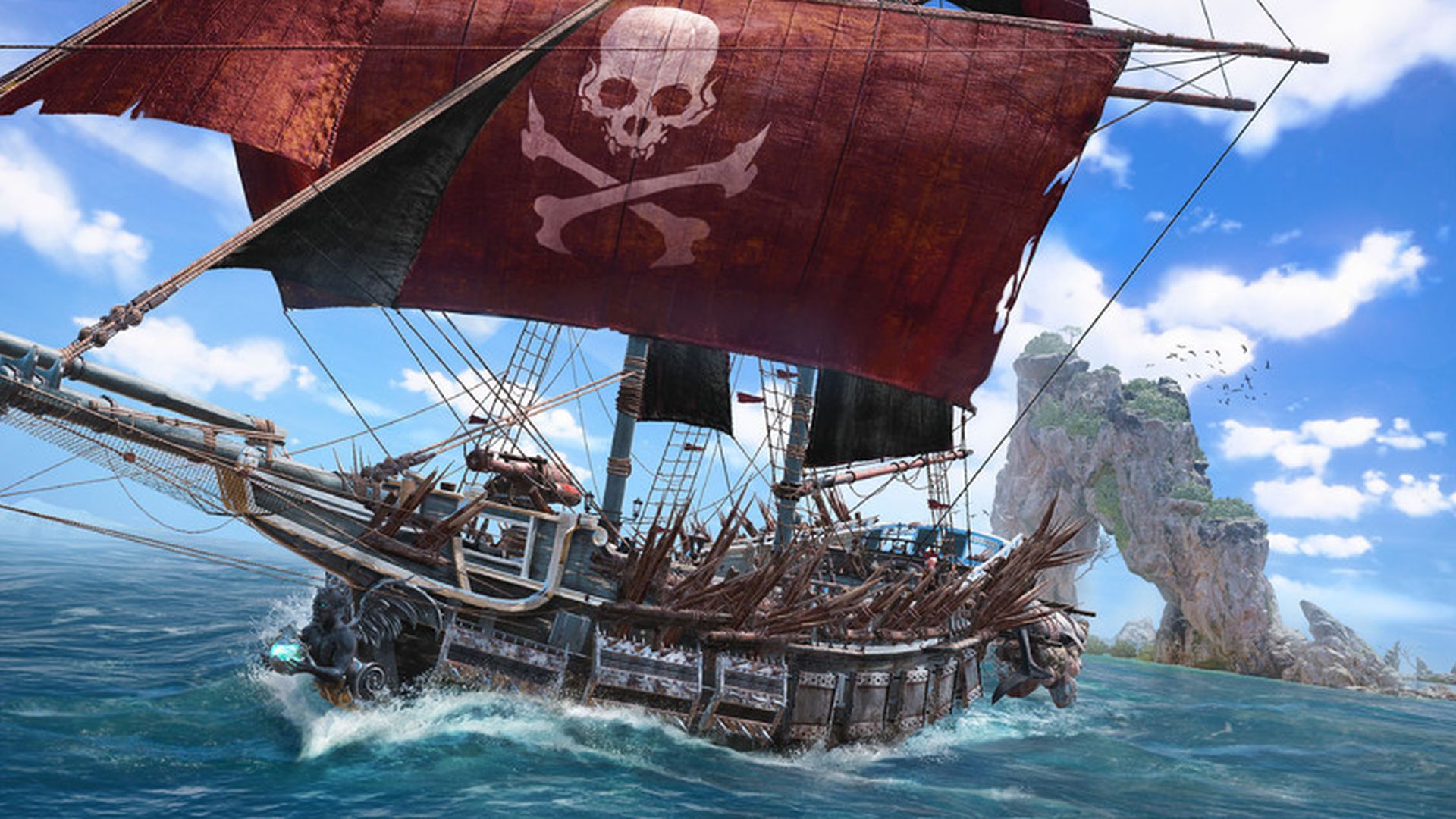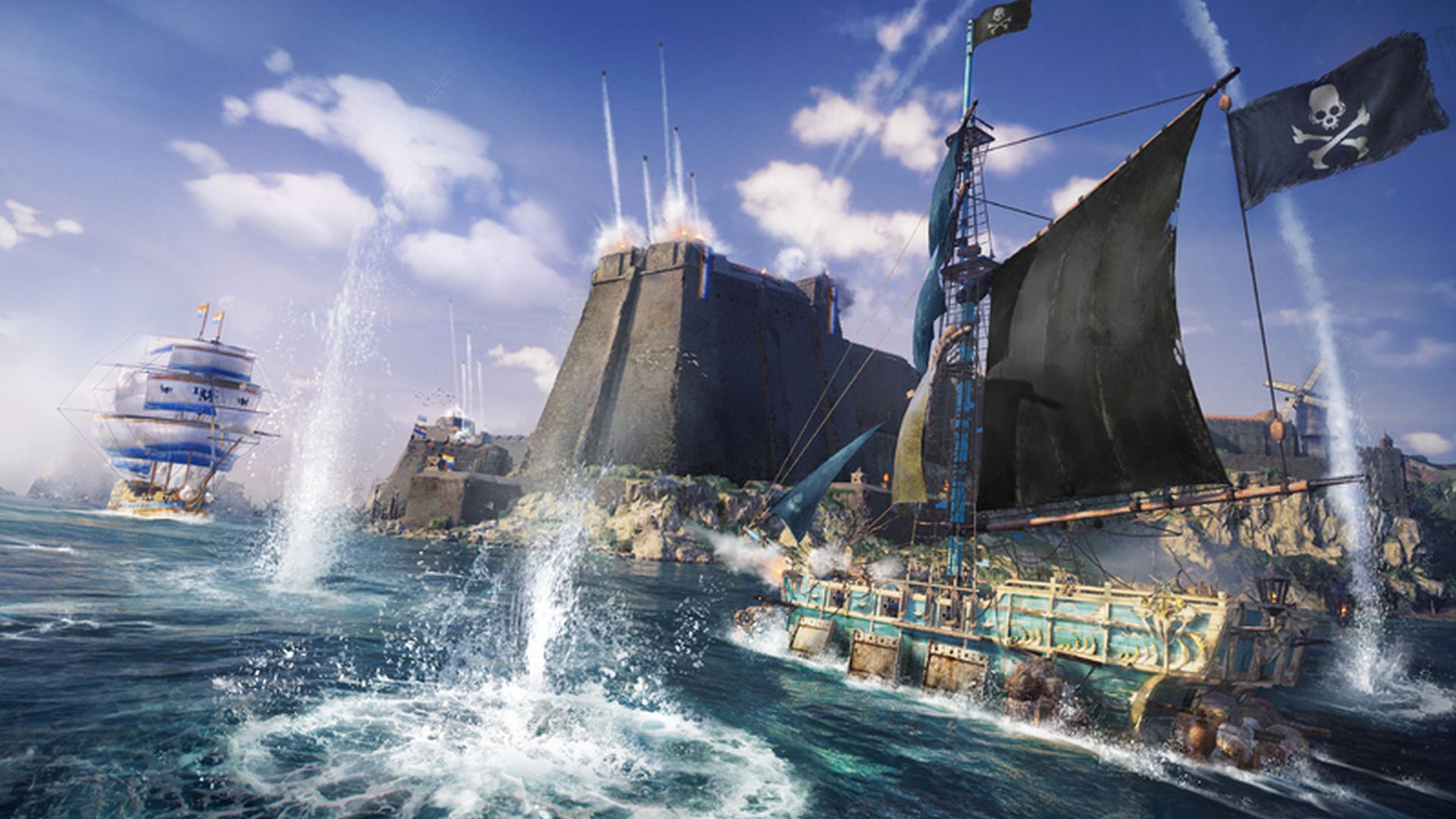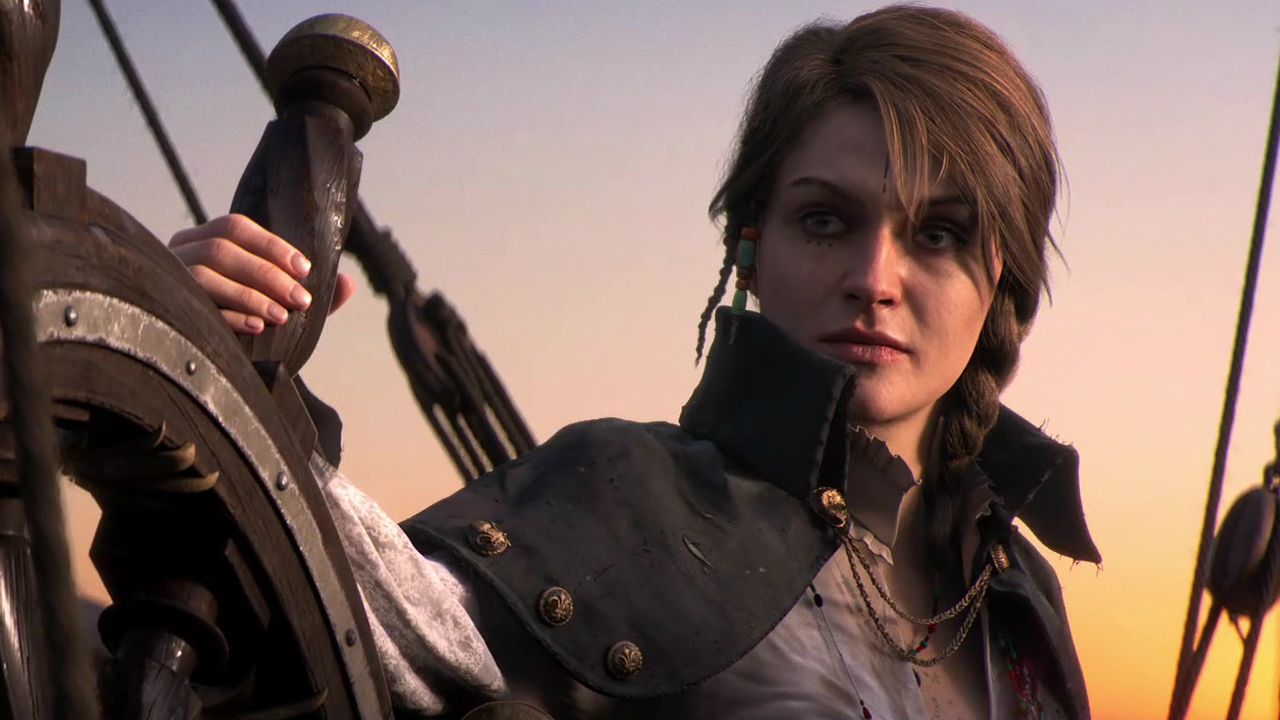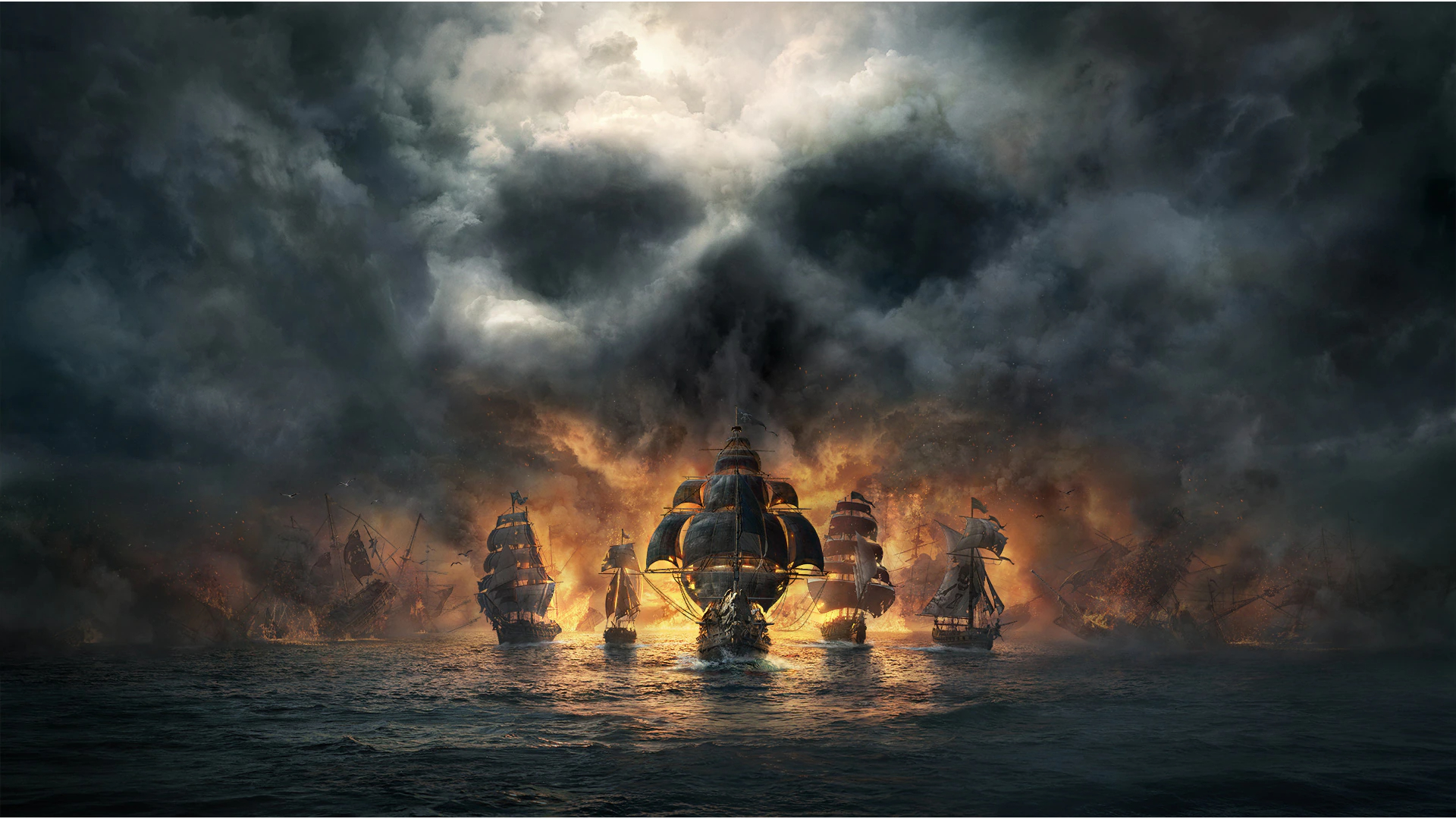
It's been far from smooth sailing for Skull and Bones. In development for nearly a decade, building off tech that we first saw in 2012's Assassin's Creed 3, a novel opportunity for a side project seems to have become the albatross around Ubisoft Singapore's neck. Now, it looks like the studio might finally have thrown off that burden, but Skull and Bones still sits firmly in the shadows of Ubisoft's previous pirate offerings.
The Assassins are nowhere to be seen, of course. But the ideas that powered the Kenways' naval adventures are still apparent. That might change once you get to the helm, particularly with enough multiplayer support, but right now, everything from the perspective shift as you fire a cannon, to the raids against royal fleets or coastal forts - even the islands and coves around you - offers little that doesn't draw a significant parallel to an experience you probably remember from Assassin's Creed 4: Black Flag.
Dredged up from the deep


Skull and Bones was revealed in 2017 and two questions have loomed over the project ever since: what do you actually do in Skull and Bones, and how will it play? While Ubisoft is yet to offer any hands-on opportunities to help us answer the latter, a new Ubisoft Forward dedicated to Skull and Bones has helped answer the former.
In the new gameplay preview, Ubisoft made clear that the message of Skull and Bones is one of establishing your own destiny. From abject poverty, shipwrecked on a lonely shore, you'll climb the ranks of the pirate hierarchy, creating your own story within Ubisoft's broader narrative arc. Starting out in little more than a homemade raft, you'll work for local traders and smugglers to acquire 'Infamy' – the most important currency for someone attempting to establish themselves on the high seas.
A pirate's name is their most important asset, and as yours becomes known across Ubisoft's twist on the Indian Ocean, you'll be able to level up that humble raft from a few wonky planks into a towering galleon, changing your ship to suit your task. Another important asset, of course, is booty, so a heavy-laden cargo ship could be key to a worthwhile raid. If you're looking to chase down a merchant vessel, however, speed is of the essence, making a nimble navigation ship a better choice. Alternatively, if destruction is necessary, firepower ships can be kitted out with a variety of exotic weapons – from mortars and bombards to devastating Greek Fire.

Given the many different kinds of piratical missions you might undertake in Skull and Bones, it would appear as if Ubisoft has made it easy to adapt your ship for the next job. In a section that involved plundering a heavily-armored fortress, game director Ryan Bernard opted for weapons with crushing and explosive damage – rather than Greek Fire armaments, which would have been more effective versus an opposing fleet. To defend against incoming attacks from the forts, sections of the ship were heavily armored, but in other areas, that armor was exchanged for cargo bags to accommodate extra loot.
The resulting battle is chaotic. The raid is successful, as Bernard and an ally hold off attacks from both land and sea, but it's hard to get a sense of exactly what's happening at a given time. To get the clearest view of the battle at hand, Skull and Bones lets you shift perspective between different spots on the boat. To be sure of where you're heading, you'll want to have the camera positioned at the helm as you attempt to steer your ship through the fight. But to get a better view of the skirmish as it unfolds, you can switch perspective to the Crow's Nest, offering a more holistic view of the seas around you. If you're ready to pick a fight, different weapon slots appear to have their own outlooks. To get the most of them, you'll need to control each one individually, sacrificing control of the rest of your ship in order to pull off the perfect shot. The "best-in-class" naval combat that Ubisoft is aiming for looks to be there on a mechanical level, but it looks like it'll take a top-tier multi-tasker to get the most out of Skull and Bones' biggest ships.
Sign up to the GamesRadar+ Newsletter
Weekly digests, tales from the communities you love, and more
Everything is permitted

"Even after all these years in development, it's still hard to get a true sense of Skull and Bones".
Even after all these years in development, it's still hard to get a true sense of Skull and Bones. Ship customization seems pretty broad, and that could make for an interesting level of diversity when it comes to deciding what kind of pirate you want to be. The open seas look like they'll be a bubbling cauldron of player adventure, with ships clashing from the coast of Africa to the Malaysian archipelago. Ubisoft promises devastating storms, attacks from Pirate Hunters, daring raids on multi-ship convoys. Buried treasure! Smuggling! Shipwrecks! The entire pirate fantasy unfolding across the ocean. Game director Ryan Barnard says that while "prominent pirates" will feature as part of a "narrative arc" allowing you to play solo if you want, Ubisoft "looks at everything with a multiplayer lens," weaving that fantasy across an entire fleet if you link up with friends.
But it's not hard to look beneath all that to the classic Ubisoft formula underneath. Skull and Bones is, for obvious reasons, immediately reminiscent of 2013's Assassin's Creed 4: Black Flag. Almost a decade's worth of visual updates have had the desired effect – the slightly fantastical twist on the Indian Ocean looks impressive, and ships are detailed, even if the motley crew inhabiting them seem just a little too coordinated at some points. But then there are other elements of the presentation that appear to be directly lifted from Black Flag, aging Skull and Bones immediately - cannon fire, ship health bars, and a hunting system are all easily recognisable.

It's also not hard to see that the pirate lifestyle Ubisoft is pushing could be undercut by a quest system that seems to place you at the whim of NPCs. Infamy can be gained by committing random violence on the high seas, but taking potshots at random ships looks to be a much slower process than completing some fetch-quests for a local merchant. That's a fine way to make a living, I imagine, but doing odd jobs for locals doesn't really feel like the pirate's life, to me.
Ubisoft's approach to its biggest worlds has been fraying at the edges for a number of years. The critical and commercial response to the latest title, Far Cry 6, was strong, but a common thread for many reviews and community reactions was that somewhere in the six titles and spin-offs that came before, we'd already seen everything the franchise had to offer. That's a reality that Ubisoft has already had to reckon with in recent history, with Assassin's Creed. Black Flag originated long before that series was overhauled into the franchise we now know through Assassin's Creed Origins, Assassin's Creed Odyssey, and Assassin's Creed Valhalla. With this game built firmly upon those old foundations, it's not clear whether the open sea is enough to distance Ubisoft from its open-world playbook. Add to that the looming presence of Sea of Thieves, and it's hard to see whether Skull and Bones will sink or swim.
We spoke to game director Ryan Barnard to answer your biggest questions about Skull and Bones.

I'm GamesRadar's news editor, working with the team to deliver breaking news from across the industry. I started my journalistic career while getting my degree in English Literature at the University of Warwick, where I also worked as Games Editor on the student newspaper, The Boar. Since then, I've run the news sections at PCGamesN and Kotaku UK, and also regularly contributed to PC Gamer. As you might be able to tell, PC is my platform of choice, so you can regularly find me playing League of Legends or Steam's latest indie hit.


